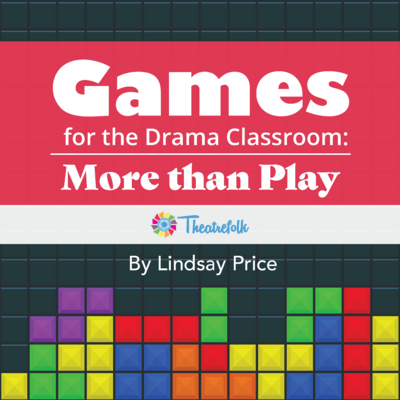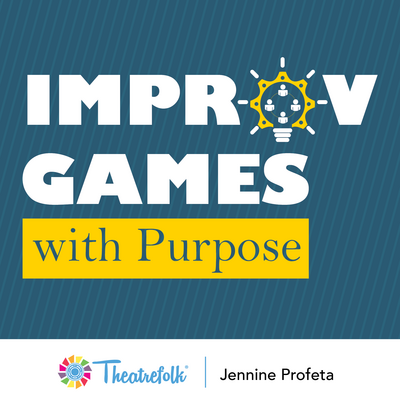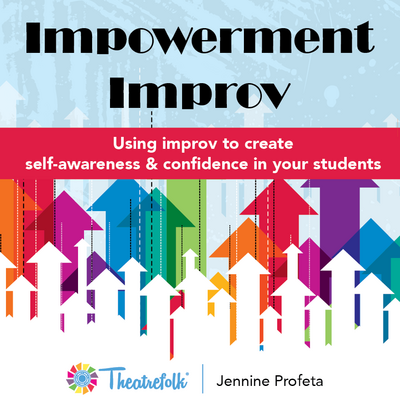
Warm-Up Game: Show and Tell
The following warm-up game uses found objects and allows students to work on their improvisation, storytelling, and character building skills. Take the well-known elementary school activity — show and tell — and give it a twist!
Description
Students will present a found object as multiple different characters. You may have played a version of this game before where the student sells a found item as if they’re in a commercial or on a shopping channel. In this version, students don’t need to sell the item, just talk about it for an extended period of time, while staying in character. This warm-up game can be done online or in person.
Materials Needed
- Found objects – whatever students have in their possession or find in the classroom
- Timer (optional)
- Remote control, bell, or buzzer (optional)
Directions
1. Have students grab a nearby object to use as their show and tell piece. It can be anything from a pencil to a stuffed animal to a piece of clothing.
2. Students may volunteer to participate, or the teacher can select the running order. The game is played in multiple rounds.
3. One by one, students will present their object. For the first round, students will introduce themselves, present their object, and describe it in detail, as themselves. They can describe what the item is, what it looks like, how they obtained it, how long they’ve had it for, whether it is meaningful to them, and so on. Students must speak using full sentences (not just a list of adjectives). For example, if the object is a pencil, the student might say something like,
“My name is Indra, and my item for show and tell is a pencil. It is about six inches long, red, and has a half-chewed eraser on the end. It used to be my sister’s pencil, but I stole it from her room and never gave it back. If you look closely, you can see that she chewed on it. I try not to touch that part of the pencil.”
If you wish, you can give a time limit. If you give a time limit, it’s the responsibility of the student to keep talking for the full time. Once they reach the time limit, cut them off. If you don’t want a time limit, have students figure out a conclusion to the story. If you think your students will go overboard, give them a limit — for example, ten sentences or descriptors.
4. For the second round, students will present the same item they picked, only as a different character. This time, they will pretend that they are five years old and are sharing their item with their kindergarten class (or whatever the equivalent is where you live).
If students aren’t sure of what to do, brainstorm as a class how a five-year-old might present their item. Have them think back to what they were like when they were in elementary school, or if they have a younger sibling or babysit, what those young people might do. Five-year-olds might be enthusiastic or shy, silly or charming, excited to share their thoughts, or eager to get their turn over with. They might wiggle in their chairs, stumble over their words at times (their brains sometimes go faster than their mouths), or go off on tangents. Going with the example above, a five-year-old might say that they got the pencil from their sister’s room, but then start talking about the sister or the sister’s room, and forget that they were talking about the pencil.
Have students present their item in character as five-year-old children. If you want to get silly, have the rest of the class react in character to each person’s presentation.
5. If time permits (or if you want to do this warm-up multiple times throughout the week), have students present their items as different characters or with different prompts. Some ideas for characters may include:
- An elderly person, sharing an item they’ve had for a long time
- A sports commentator, giving a play-by-play description of the item
- An ASMRtist (autonomous sensory meridian response — soothing whispers)
- A celebrity “sharing” the item with their fans, while trying not to let slip that they’re actually endorsing the product
6. Here are two twists you can use as well, to keep students on their toes:
- Channel Change #1: Create a cue to “change the channel” by using a sound effect such as a bell or buzzer, or by “clicking” a remote control, and have the student present their item using a different character (for example, start as a five-year-old child and then switch to a sports commentator). You can also simply clap your hands or say “pause” or “switch” if you don’t want to use any props yourself.
- Channel Change #2: Use your channel change cue plus a student’s name to switch from student to student (for example, start with Indra and then switch to Jonas). For this twist, don’t give your students a running order; they are responsible for paying attention and being ready to go when they’re called.
Related Articles
Games for the Drama Classroom: More Than Play
by Lindsay Price
A collection of games and activities that go well beyond the notion of "play."
Improv Games with Purpose
by Jennine Profeta
Improv games including feedback suggestions and questions, game variations, teaching tips, side coaching tips, entry prompts, exit slip questions, and more!
Your High School Improv Show Playbook
by Jim Hoare
Have you wondered how to take improv to the next level with your students? Your High School Improv Show Playbook is the "how-to" guide for you! Empower students to present their first improv show that is fun and entertaining for all.
Impowerment Improv
by Jennine Profeta
Using improv to create self-awareness & confidence in your students






